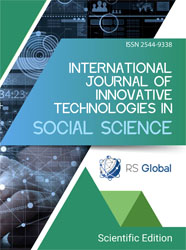PROLACTIN AS A HORMONE RESPONSIVE TO PHYSICAL EXERCISE
Abstract
Background. Physical exercise is a major physiological stressor that affects the human endocrine system. Among the hormones responsive to physical exertion is prolactin (PRL), known primarily for its role in lactation but also involved in stress regulation, immune function, metabolism, and reproduction.
Aim. This article aims to review current knowledge on the effects of intense physical activity on prolactin levels and the potential consequences for hormonal balance in athletes.
Material and methods. A systematic literature review was conducted using PubMed and Scopus databases. Inclusion criteria were English-language articles with full-text access, including original and review papers analyzing prolactin changes in response to exercise in humans. A total of 183 publications were screened, and those not meeting the methodological or thematic criteria were excluded.
Results. Intense physical exercise, particularly above the anaerobic threshold (e.g., HIIT), causes a sharp and transient increase in prolactin levels, with the response magnitude influenced by exercise intensity, duration, and environmental factors. Regular training may modulate both baseline prolactin levels and acute hormonal responses. Differences based on sex, training status, and menstrual cycle phase were also observed. Prolactin’s rise post-exercise may contribute to metabolic adaptation, immune modulation, and recovery processes. However, chronically elevated PRL levels—common in overtrained individuals—can negatively affect reproductive and metabolic health.
Conclusions. Prolactin plays a broader physiological role than previously appreciated. Its exercise-induced elevation reflects the integration of neuroendocrine and immune responses to physical stress. Understanding this hormonal response is essential in optimizing training protocols, supporting recovery, and preventing endocrine dysfunction in athletes.
References
Kochańska-Dziurowicz A, Gawel-Szostek V, Gabryś T, Kmita D. (2001). Changes in prolactin and testosterone levels induced by acute physical effort in young female athletes. Human Physiology, 27(3), 100–103. https://doi.org/10.1155/2001/9253083
Hackney AC, Saeidi A. (2019). The thyroid axis, prolactin, and exercise in humans. Current Opinion in Endocrine and Metabolic Research, 9, 45–50. https://doi.org/10.1016/j.coemr.2019.11.006
Papazoglou AS, Leite AR, Moysidis DV, et al. (2024). Serum prolactin levels and mortality in adults without prolactinoma: A meta-analysis. Journal of Clinical Endocrinology & Metabolism, 109(8), e1652–e1664. https://doi.org/10.1210/clinem/dgae087
Freeman ME, Kanyicska B, Lerant A, et al. (2000). Prolactin: Structure, function, and regulation of secretion. Physiological Reviews, 80(4), 1523–1631. https://doi.org/10.1152/physrev.2000.80.4.1523
Fitzgerald P, Dinan TG. (2008). Prolactin and dopamine: What is the connection? Journal of Psychopharmacology, 22(2 Suppl), 12–19. https://doi.org/10.1177/0269216307087148
Lanfranco F, Strasburger CJ. (2016). Effects of physical activity and training on endocrine function. In: Sports Endocrinology (Vol. 47, pp. 1–11). Karger. https://doi.org/10.1159/000445147
McMurray RG, Hackney AC. (2000). The endocrine system and exercise. In: Garrett W, Kirkendall D, eds. Exercise and Sport Science (pp. 135–162). Williams & Wilkins.
Hackney AC, Premo MC, McMurray RG. (1995). The effects of aerobic and anaerobic exercise on reproductive hormone relationships in men. Journal of Sports Sciences, 13(4), 305–311.
Levine S, Muneyyirci-Delale O. (2018). Stress-induced hyperprolactinemia: Pathophysiology and clinical approach. Obstetrics and Gynecology International, Article ID 9253083. https://doi.org/10.1155/2018/9253083
Hackney AC, Davis HC, Lane AR. (2015). Exercise augments the nocturnal prolactin rise in exercise-trained men. Therapeutic Advances in Endocrinology and Metabolism, 6(5), 217–222. https://doi.org/10.1177/2042018815593035
Hackney HCM, et al. (2017). The effects of exercise on hypothalamic–pituitary–gonadal axis function in humans: A systematic review. Sports Medicine, 47(4), 1–20. https://www.ncbi.nlm.nih.gov/pmc/articles/PMC5508713/
De Souza MJ, Maguire MS, Maresh CM, et al. (1991). Adrenal activation and the prolactin response to exercise in eumenorrheic and amenorrheic runners. Journal of Applied Physiology, 70(6), 2378–2387. https://doi.org/10.1152/jappl.1991.70.6.2378
Brisson GR, Volle MA, DeCarufel D, et al. (1980). Exercise-induced dissociation of the blood prolactin response in young women according to their sports habits. Hormone and Metabolic Research, 12(5), 201–205. https://doi.org/10.1055/s-2007-996242
Ramadan W, Xirouchaki CE, El-Gilany AH. (2025). The comparative effects of high-intensity interval training and traditional resistance training on hormonal responses in young women: A 10-week intervention study. Sports, 13(3), 67. https://doi.org/10.3390/sports13030067
Dey M, Mondal S, Chatterjee S, et al. (2014). Effect of regular exercise on prolactin secretion: A pilot study. IOSR Journal of Sports and Physical Education, 1(7), 1–4. https://www.researchgate.net/publication/362889059
Rojas Vega S, Hollmann W, Strüder HK. (2012). Influences of exercise and training on the circulating concentration of prolactin in humans. Journal of Neuroendocrinology, 24(3), 395–402. https://doi.org/10.1111/j.1365-2826.2011.02266.x
Athanasiou N, Bogdanis GC, Mastorakos G. (2023). Endocrine responses of the stress system to different types of exercise. Reviews in Endocrine and Metabolic Disorders, 24(2), 251–266. https://doi.org/10.1007/s11154-022-09758-1
Moore CA, Cohen P, Al-Dujaili EA, Jones DA. (2002). Exercise increases prolactin-receptor expression on human lymphocytes. Journal of Applied Physiology, 93(6), 2074–2081. https://doi.org/10.1152/japplphysiol.00004.2002
Bonavina L, Taylor M. (2022). Metabolic effects of prolactin and the role of dopamine agonists: A review. Frontiers in Endocrinology, 13, 1002320. https://doi.org/10.3389/fendo.2022.1002320
Philippou A, Maridaki M, Tenta R, Koutsilieris M. Hormonal responses following eccentric exercise in humans. Hormones (Athens). 2017 Oct;16(4):405-413. https://doi.org/10.14310/horm.2002.1761
Views:
276
Downloads:
59
Copyright (c) 2025 Wiktoria Skowron, Mateusz Kalita, Marcel Bobiński, Justyna Bartol, Klaudia Romejko, Justyna Rajczyk, Monika Wiczuk-Wiczewska, Zuzanna Wieczorek, Adam Szymczak, Aleksandra Kozińska

This work is licensed under a Creative Commons Attribution 4.0 International License.
All articles are published in open-access and licensed under a Creative Commons Attribution 4.0 International License (CC BY 4.0). Hence, authors retain copyright to the content of the articles.
CC BY 4.0 License allows content to be copied, adapted, displayed, distributed, re-published or otherwise re-used for any purpose including for adaptation and commercial use provided the content is attributed.











